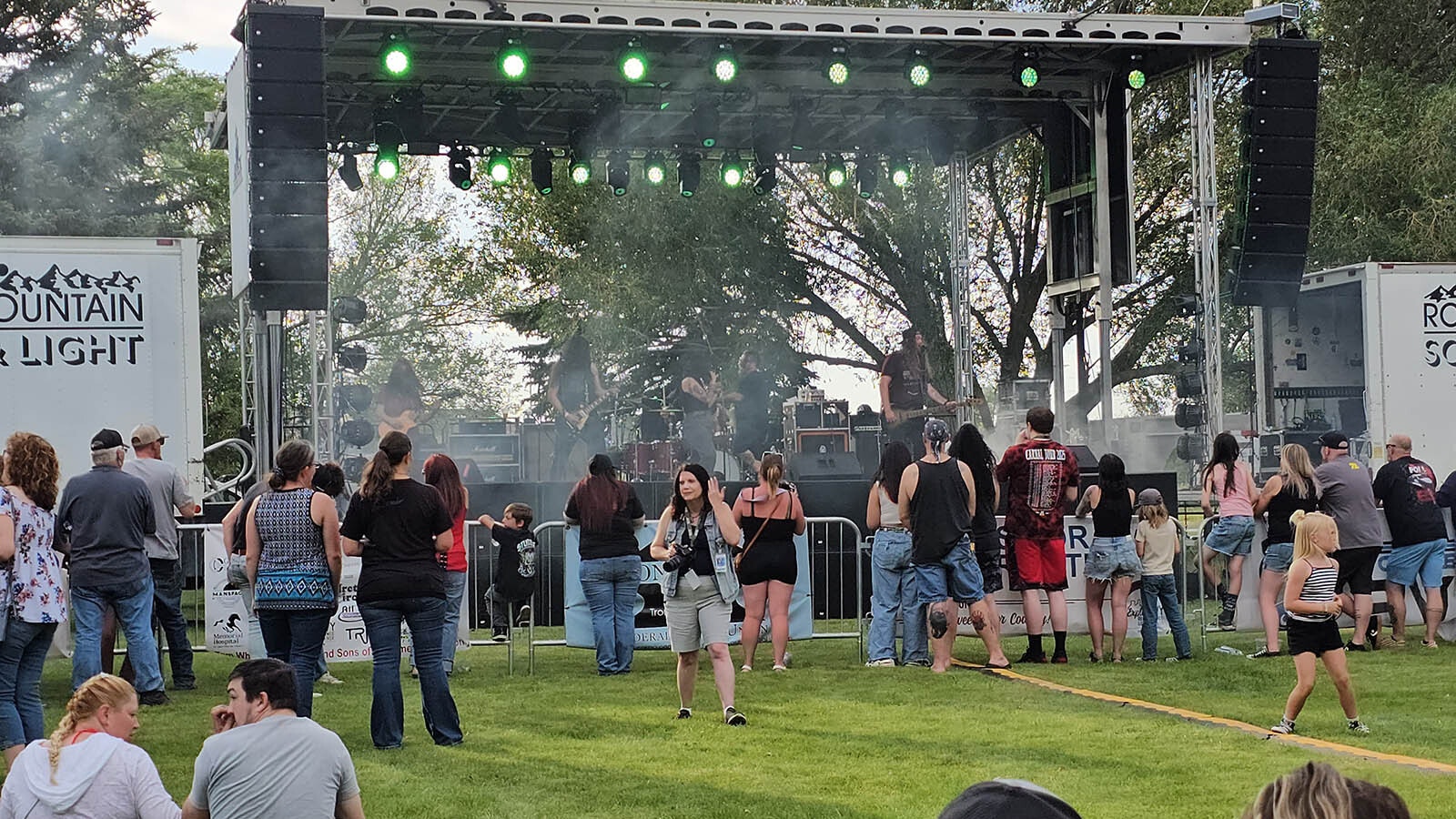It was a fall day Sept. 17, 1934, when two young newlyweds stopped to rest after hiking for miles above Angle’s Camp, today known as Togwotee Mountain Lodge.
The couple was on the sixth day of their elk-hunting honeymoon. The bride, Olga (Schultz) Mauger (pronounced Major), was likely a more-than-willing participant. She grew up in the area fishing and hunting, and knew the country well.
Rumors that she was a descendent of Jackson Hole mountain legend Beaver Dick Leigh proved false, however. A census records check found Olga was born in Lead, South Dakota, on March 11, 1913. Her parents were both from eastern Russia, of German ancestry, and had arrived in America on July 12, 1905, in Baltimore, Maryland.
The groom, Carl Mauger, suggested they climb a small hill and scout for elk from there. Olga said she was tired and told Carl to go on ahead. Carl thought it strange. Olga loved the woods and was always up for a strenuous hike or climb.
As Carl climbed, he turned to check on Olga. There she sat on a rock within hearing distance of passing cars on Togwotee Pass Road, built in 1921. She wore tan breeches, a blue shirt and a gray pullover sweater with high-laced boots. In her belt was a small hatchet and she carried a bag of sandwiches.
Carl returned to the spot within a half-hour. He later estimated to authorities it couldn’t have been more than 20 minutes. Olga was gone without a trace. Some reports say an empty bag of sandwiches was all that remained; others claim nothing, not even tracks were left behind. Carl searched frantically, shouting Olga’s name to the wind.
He never saw his wife again.
Massive Search Turns Up Nothing
Ranger KC “Sunny” Allan remembered getting the call to meet Carl at the Stalnaker hunt camp at 1 p.m.
“A lost lady was reported by Mrs. Angle of Angle’s Camp on Togwotee Pass,” he wrote in a journal entry dated Sept. 5, 1934. Allan may have misstated the date, but other details were exactly what area newspapers also reported.
Headlines of the Sunday edition of the Helena Montana on Oct. 7, 1934, read: “Posse Seeking Missing Woman, Husband Under Suspicion.”
Carl Mauger related the story to Allan. He told it the same, over and over again to whoever asked. The couple did not have a fight. There was no reason she would leave intentionally, Carl assured. And Olga was not one to get lost accidentally.
“Olga was an expert in the forest and everyone knew she couldn’t get lost,” Allan wrote.
Allan rounded up a search party of more than 300 men, including dozens of Civilian Conservation Corps members working nearby, game wardens, private residents, Teton County Sheriff JA Francis of Jackson and some 20 Washakie Indians who were expert trackers supplied with bloodhounds. It was the largest manhunt in state history.
They checked everywhere and turned up nothing.
An early season snowstorm cut short search efforts. County Attorney Wilford W. Neilson told the Montana paper there was little hope the woman would be found because of the snow. Neilson held Carl Mauger for months for questioning. Neilson grilled him, asking if he was the same Carl J. Mager wanted in Denver on a charge of larceny as bailee. He was not, apparently.
Carl was finally released in “technical custody of his brother-in-law, Fred Schultz.” The presumed widower would search for a while longer himself and even returned to the area the following year with two of Olga’s brothers to continue looking for his lost bride.
The Aug. 15, 1935, Jackson Hole Courier ran a follow-up article on the disappearance.
“Search for Mrs. Olga Schultz Mauger, 21-year-old bride who disappeared on Two-Gwo-Tee pass 11 months ago has been discontinued for the present time,” it read.
Officials said they had not given up hope of finding the missing woman’s body that fall, but had to abandon the search because available men were too few, busy working in the hay fields or fighting forest fires.
A Tale With A Twist
The unexplained disappearance of Olga Mauger is certainly strange enough, but that’s not the whole of the story.
Carl was an oilman living in Midwest, Wyoming, where he was dating a woman named Ella Tkach (pronounced Tee-cash). For five or six years, Ella pestered her boyfriend to get married but Carl put her off saying he needed to be more financially stable.
Then, at a dance Carl and Ella were attending, Carl saw the red-headed beauty Olga and was smitten. From that moment on, Carl and Olga began a whirlwind romance that culminated in a Sept. 11 wedding in Harrison, Nebraska.
Although Ella agreed to step out of the picture, Olga's sister Edith Thompson later claimed that after Olga and Carl married, Ella sent them a letter threatening suicide.
Even more ominously, Mrs. Thompson also claimed that Olga personified that old adage about “marrying in haste.” She believed her sister regretted her marriage practically from the moment the ring was placed on her finger. Edith recalled that as she was helping Olga pack for the honeymoon, her sister begged her to come with them.
“Why, Ollie,” Edith replied, "three persons never go on a honeymoon.” She also noted that Olga's expression was terribly sad, “not at all like that of a new bride.”
Ella was understandably upset, but accounts differ regarding the relationship between Olga and Ella. Some say Ella threatened to kill herself after being jilted by her longtime beau in a letter she sent to the new bride herself. But in his diary, Allan states Olga and Ella were essentially friends even after the wedding, and it was Olga who wrote Ella about her intentions to kill herself out of guilt for stealing Carl.
Olga’s sister Edith told authorities she thought her sister simply got a case of cold feet after the wedding and regretted it. She wanted out, Thompson speculated, and probably hitched the first ride leaving Jackson Hole she could once out of Carl’s sight.
Olga had about $30 cash and was a trained stenographer. She could have picked up work anywhere in the country and started a new life. Thompson said every day she walked to the mailbox she expected a letter from Olga explaining everything, but none ever came.
Case Remains Open And Unsolved
Finally, seven years after Olga vanished on Togwotee Pass, Carl got an official divorce and remarried. To Ella. The two moved to Redding, California, where Carl died in 1978 at the age of 72. Ella lived to be 92, passing away March 19, 1998.
A murder, a suicide, a bear attack? Where then was the body? For years, hunters in that area kept a sharp eye out for any sign of the missing woman. All to no avail.
Olga Schultz Mauger had simply vanished.
As an epitaph, the National Missing and Unidentified Persons System (NamUs) requested the Fremont County Sheriff’s Office open a file on the disappearance of Olga Mauger, making it officially oldest missing person case in Wyoming records. It’s case No. C-15-02025. Any information can be relayed to Det. Jason Cox at 307-332-5611.
Jake Nichols can be reached at jake@cowboystatedaily.com.





